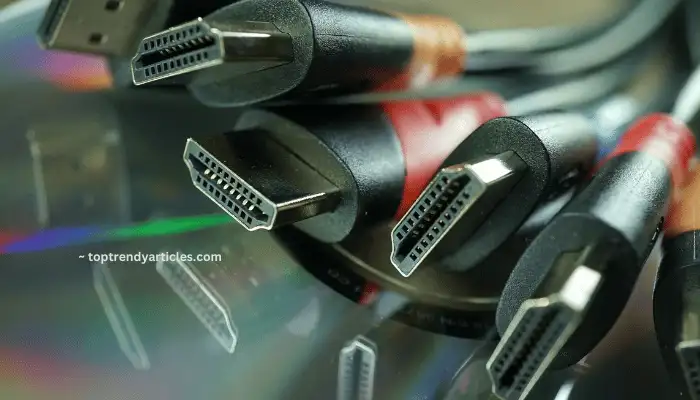HDMI, which stands for High-Definition Multimedia Interface, is an audio and video interface used to transfer completely uncompressed digital streams. It has become a standard across modern electronics, replacing older transmission methods like VGA or coaxial cables at the low end and competing with contrast media technologies such as component video equipment. The ability of HDMI to broadcast high-resolution digital signals on a single cable has made it mandatory for home entertainment systems, computers, and other multimedia equipment.
What is HDMI?
HDMI is a connection port that allows you to transmit uncompressed digital audio and video signals between devices. Unlike conventional analog connections, HDMI does not degrade the sound or video signal, retaining the full original content and providing the user with the maximum possible quality.
HDMI simplifies the interaction process between devices. A single HDMI cable combines audio and video, reducing the need for multiple cables and keeping your setup clean and clutter-free. It’s ideal for any home theater or computer system.

Types of Sources That Can Be Used With HDMI
HDMI is widely used and suitable for professional applications as well as personal use. Here are some common devices that use HDMI:
- Blu-Ray Disc Players: Most Blu-ray Disc players were designed to provide HD and UHD content with high-quality playback.
- PCs: Many modern PCs and laptops have an HDMI port, allowing you to connect the computer to external displays, such as a monitor or TV.
- Game Consoles: Popular gaming systems like the PlayStation and Xbox series rely on HDMI for both audio and video output.
- Set-Top Boxes: Devices used to receive cable or satellite television signals often include HDMI ports for connection to TVs.
- Digital TVs: The majority of new televisions have HDMI ports, supporting HD and UHD content.
Essentially, if you have a modern device that needs to be hooked up to a display or audio system, it probably has an HDMI port.
How Does HDMI Work?
HDMI sends digital data between connected devices over a single cable, transmitting both audio and video signals efficiently. HDMI supports various video formats, including standard definition (SD), enhanced definition (ED), high definition (HD), and ultra-high definition (UHD).
HDMI works independently of many DTV (Digital Television) standards while complying with them. For example, when working with compressed MPEG movie files, HDMI decodes the data so it can be viewed on a screen. It also supports multiple audio formats, such as multi-channel surround sound, making it ideal for home theater systems that require both high-quality visual and audio data.
Are All HDMI Versions the Same?
HDMI comes in different versions, each with its own set of specifications. The original HDMI 1.0 was released in 2002, and several versions have been introduced since, each building on the previous one’s capabilities:
- HDMI 1.0: Supports a maximum bandwidth of 4.95 Gbps with video resolutions up to 1080p.
- HDMI 1.4: Introduced support for 3D video, 4K resolution at 30Hz, and an Audio Return Channel (ARC).
- HDMI 2.0: Increased bandwidth to 18 Gbps, supporting 4K resolution at 60Hz and up to 32 audio channels.
- HDMI 2.1: The latest major update, supporting 8K resolution at 60Hz, 4K at 120Hz, and dynamic HDR.
While each new version is backward-compatible with older devices, they include new features and capabilities to support emerging technologies, ensuring HDMI remains relevant as digital media evolves.
Where Did HDMI Come From?
HDMI was developed through collaboration among major electronics companies like Philips, Sony, Toshiba, and Silicon Image. These companies recognized the need for a unified standard to meet the growing demands of digital media.
Since its introduction, HDMI has been continuously enhanced, driven by the efforts of its founding companies and market demands. Today, HDMI is the most widely used interface for high-definition multimedia, with billions of devices equipped with HDMI ports worldwide.
Conclusion
HDMI has changed how we connect our digital devices, providing a simple and effective solution for transmitting audio and video signals. Its ubiquity makes it indispensable in any modern multimedia setup. Whether you’re setting up a home theater, connecting a computer to a monitor, or playing games on a console, HDMI is your best option for high-quality connections.
As technology continues to advance, HDMI will likely evolve to meet the needs of new devices and formats. By understanding HDMI and its various versions, you can ensure that you’re getting the most out of your digital connections.



